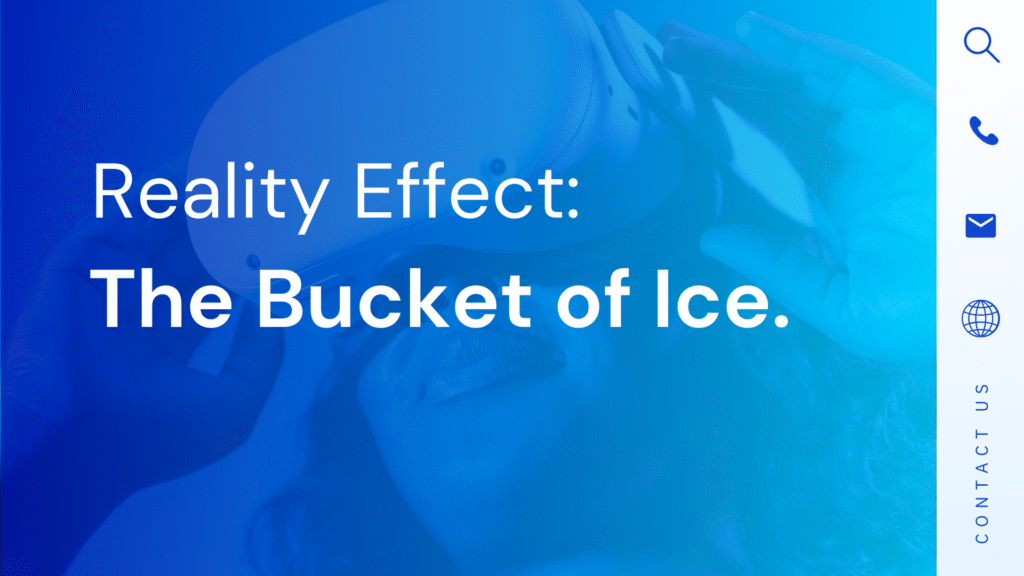From ALS to Anxiety: How the Ice Bucket Challenge is Raising Mental Health Awareness
Table of Contents
Introduction Ice Bucket Challenge
The concept of the Ice Bucket Challenge started as a viral marketing campaign in 2014, with its goal being to create awareness and raise funds to help ALS (Amyotrophic Lateral Sclerosis). Celebrities, athletes, and politicians, including Donald Trump, took part in the Ice Bucket Challenge, pouring icey water over their heads and filming the video material. It proved to be one of the most successful fundraising campaigns ever with a total of half a billion dollars raised globally. But over time, the nature of the challenge started shifting. What began as a fun, charity event to raise awareness of ALS has become something different: the Ice Bucket Challenge to raise mental health awareness.
The freezing shock of the water is now also being utilized in a new way in campaigns like the USC Mental Health Ice Bucket Challenge and other events developed by the university to demonstrate sudden, intense battles of anxiety, stress, and depression. Today, asking the question of what the Ice Bucket Challenge of 2025 is, the answer is simple: it is an attack on the creation of mental health awareness in new, innovative, viral, and effective ways.

The Ice Bucket Challenge has started.
The ALS Ice Bucket Challenge was a social media movement that was initially started in the US. This was easy: pour some ice-cold water over your head, take a video of it, share it on social media, and also challenge your friends to do it. The water bucket challenge, or bucket water challenge, was mostly known in many places. To this day, when someone asks questions such as when the last Ice Bucket Challenge was, this testifies to the fact that it has become a memorable part of the culture.
It was in full swing as celebrities, politicians, global influencers, and others were all involved, and the campaign has attracted record-breaking donations and raised awareness about ALS worldwide. Its online triumph demonstrated the impact of online challenges and was succeeded by other campaigns like the Ice Bucket Challenge mental health edition.
ADL: ALS Transferred to Mental Health.
As the wellness debate acquired more and more popularity, the proponents understood that the challenge would lead them to an opportunity to become aware of the invisible challenges, which may include anxiety, depression, and stress. By doing so, the Ice Challenge mental health trend was born. The original Ice Bucket Challenge would not have become viral without social media, and that is also true of the Ice Bucket Challenge mental health edition.
An especially popular version was known as the USC Mental Health Ice Challenge, or the USC Ice Bucket Challenge; students and groups at the University of Southern California used this variant to create awareness there. The message behind the Ice Bucket Challenge was very simple and very powerful: because icy water can leave you out of breath, that is how it feels to grapple with mental illness, and that is shocking and intense and not easy to cope with on your own.
Cold water therapy may not be the solution to the problem of mental illness, but it is a part of therapy that has the potential to be relatable to people to demonstrate that they know how it feels to struggle with their mental illnesses, and that they can also identify with people who live with their illnesses daily.
Psychology of Cold Exposure.
Interestingly, there is real science in the symbolism. Exposure to cold is not a novel topic and has been studied on its impacts on the body and mind. Ice baths and cold showers can help increase circulation, reduce inflammation, release endorphins, and even lower stress levels. That is why the current Ice Bucket Challenge 2025 still needs to be connected with wellness. Ice Bucket Challenge for mental health. The Ice Bucket Challenge of mental health is a continuation of this scientific frame to push further its message, that it is not only uncomfortable being exposed to ice water but also a very strong metaphor of how tough one must be to handle anxiety, depression, and other hardships.
Cold water therapy may not be the solution to the problem of mental illness, but it is a part of therapy that has the potential to be relatable to people to demonstrate that they know how it feels to struggle with their mental illnesses, and that they can also identify with people who live with their illnesses daily.

The relevance of social media in creating awareness of mental health.
The original Ice Bucket Challenge would not have become viral without social media, and the Ice Bucket Challenge mental health edition is no exception. A platform like TikTok, Instagram, and Facebook allows participants to record and post, and inspire other users in real-time. Hashtags such as IcebucketChallengeMentalHealth, USCIceBucketChallenge, and even searches for Donald Trump Ice Bucket Challenge 2025 are used to keep the movement going. Each new form, be it a water bucket challenge at a college or a bucket water challenge campaign with millions of participants, is assured to reach millions of people worldwide, through social media.
Better said, it allows the average citizens to share their personal stories, which makes awareness regarding mental health much more personalised and easy to relate to. What people are asking is what the Ice Bucket Challenge USC, or the Ice Bucket Challenge 2025, and all the solutions will bring them to empathy, awareness, and breaking stigma.
Criticism and Controversy
Of course, there is no viral trend that is not also criticized. Some think the Ice Bucket Challenge mental health movement will become more of a show than a campaign. When was the last Ice Bucket Challenge happen is one of the questions that shows that people do not find it a serious campaign, but merely a fad. Others ridicule it as performative activism, where the participants do it because it will attract likes and views, rather than because they care about the subject.
But its advocates believe that awareness has a force of its own. It does not need to be given or promoted by everyone, but the conversation is what matters.It should be mentioned that those who focus the mental health in the spotlight by changing campaigns like the USC Ice Bucket Challenge or the Donald Trump Ice Bucket Challenge to ensure that the issue is not shoved into obscurity deserve credit.

Reality Effect: The Bucket of Ice.
The Ice Bucket Challenge to raise awareness of mental health has already shown that it works, despite criticism. Colleges like USC, nonprofits, and wellness institutions have also brought up money and a lot of conversation. what is the usc ice bucket challenge, The Ice Bucket Challenge (commonly misspelled in search results) was originally the ALS Ice Bucket Challenge (spelling error), but today the Ice Bucket Challenge has become not only about raising money,
but also about eliminating stigma, sharing stories, and supporting one another. Students, workers, and even celebrities have participated in the bucket water challenge as a token gesture to be a part of the cause of the suffering masses, who are silent victims. By doing so, the Ice Bucket Challenge mental health trend was born.

Conclusion
The Ice Bucket Challenge has a long way to go since ALS is anxiety. A wellness conversation starter is an activity that was initiated as a fundraising activity but has become a global conversation starter. It might be the USC Ice Bucket Challenge, the Donald Trump Ice Bucket Challenge, or just the Ice Bucket Challenge mental health campaigns that continue to this day, but the message remains the same: awareness is power. USC ice bucket challenge meaning The one question that remains to be asked is What is the Ice Bucket Challenge in 2025? And that can be solved by way of creatively reminding people to take care, not only of ALS, but of mental health.
A relatively simple task, such as pouring icy water, as shown in the water bucket challenge, can make millions of people act, donate money, and speak up. The effect may begin with a shudder and end with the sense of unity and sympathy.